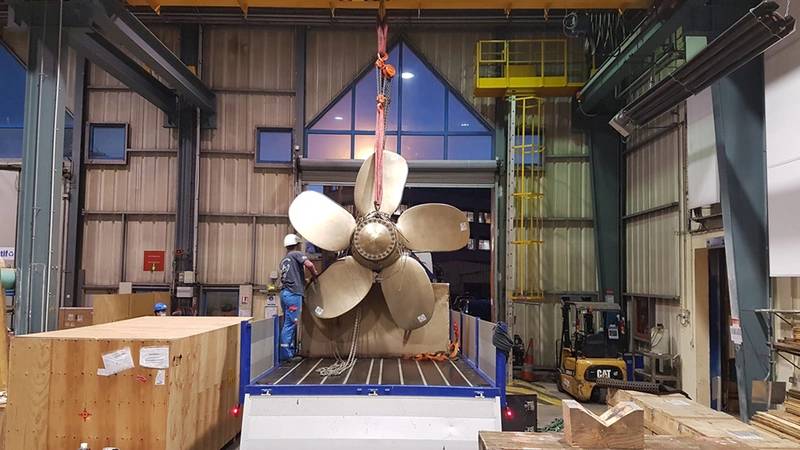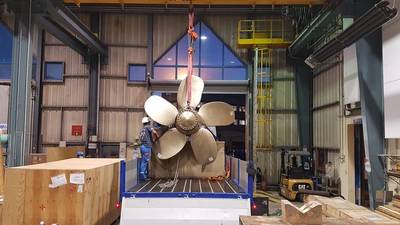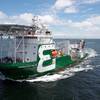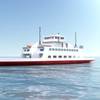Tech File: 3D Printed Prop for French Warship
Naval Group manufactured a new-generation propeller via a metal 3D printing process, mounted on a tripartite minehunter.
This propeller is 2.5-m in diameter, supported by five 200-kg blades. The equipment left the workshops of the Naval Group site of Nantes-Indret in October 2020 for the site of Brest in order to be mounted on the ship's propeller shaft. As part of its major technical stop, the assembly was transferred to the submarine base to be mounted on the intermediate shaft of the Andromède in November. Sea trials were then performed successfully at the end of December.
- A world first
“Obtaining military naval quality requires rigorous development. Nearly three years of R&D - carried out by the Technical and Innovation Department in cooperation with the Ecole Centrale de Nantes within the framework of the LabCom Joint Laboratory of Maritime Technology - went into the development of the deposition process of metal wire fusion,” said Emmanuel Chol, Director of the Nantes-Indret site. “Today, we witness a world first. It is the largest metal 3D-printed thruster ever to have been manufactured and the first propeller resulting from this technology, embarked on board a military ship and manufactured for use beyond just sea trials.”
 Photo Copyright NavalGroup
Photo Copyright NavalGroup
Naval Group worked together Bureau Véritas throughout the process to present its technical justification file in order to allow the SSF (Fleet Support Services) and the DGA (French Defence Procurement Agency) to authorise the trial of the blades produced on a military ship in normal operating conditions. The blades received certification from Bureau Véritas.
- €7 million investment in metal 3D printing in 2021
For Eric Balufin, Director of the Naval Group site of Brest, “the assembly of this 3D-printed propeller shows great promise for the future. This new technology will enable us to considerably reduce technical constraints, and therefore allow for new manufacturing solutions for complex geometrical shapes which cannot be produced through conventional processes. It will also enable us to greatly reduce production time and consequently in-service support.”
This propeller is a first step, with further developments aimed at revamping the detailed design of other parts, including thrusters.











